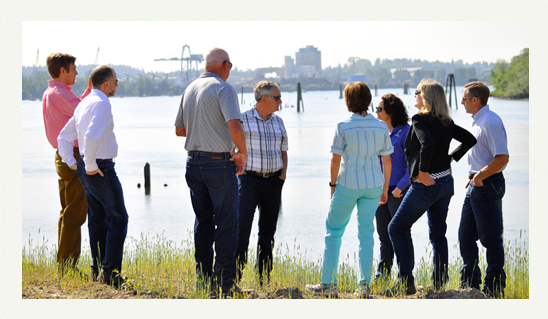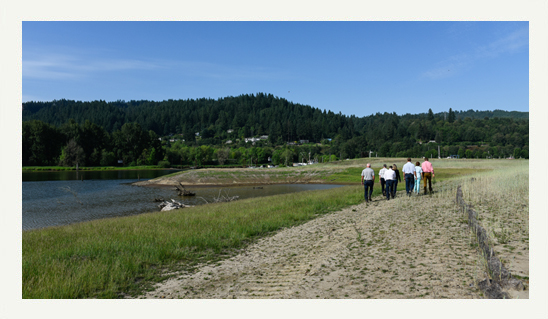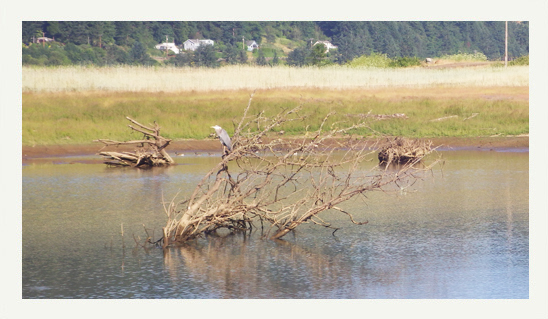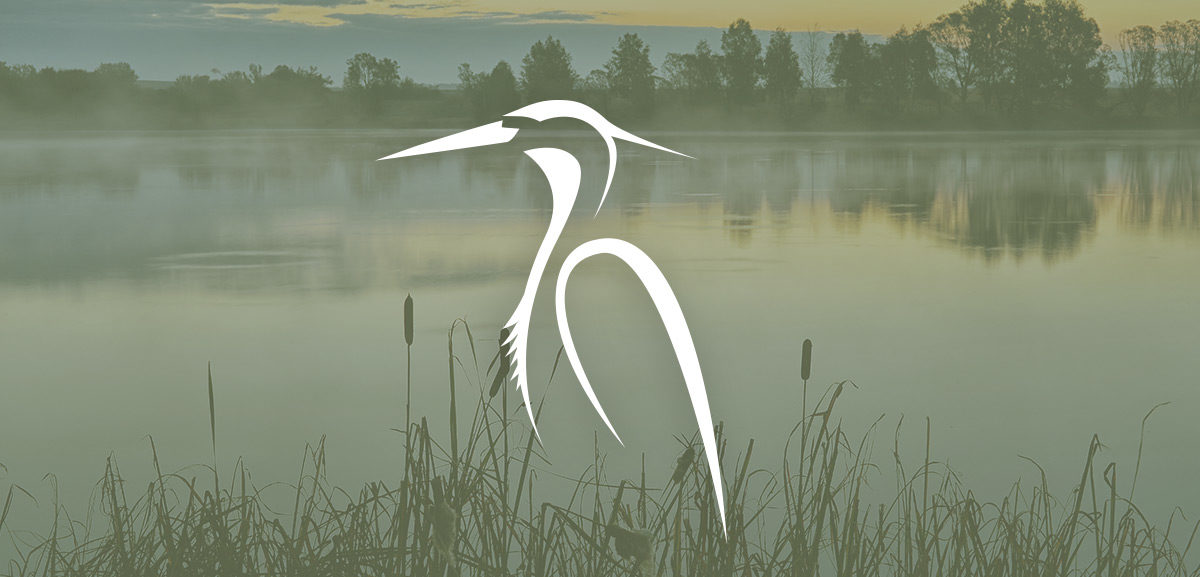The rising temperatures signal the onset of summer and the beginning of construction season in the Pacific Northwest, which means it’s time to resume work on the Alder Creek Restoration Project on Sauvie Island in Portland, Oregon. The Alder Creek Project, approved by the Portland Harbor Natural Resource Trustee Council in May 2014, is the first habitat restoration project to be implemented specifically to benefit fish and wildlife affected by contamination in Portland Harbor.
The project, which was partially constructed in 2014, will provide habitat for salmon, lamprey, mink, bald eagle, osprey, and other native fish and wildlife living in Portland Harbor. Over one hundred parties have been named as potentially responsible parties in the Portland Harbor Superfund site with obligations to restore habitat for the natural resources that were damaged.

In 2015, the City of Portland was the first potentially responsible party to invest in the Alder Creek Restoration Project. On May 29, 2015, Wildlands conducted a tour of the restoration site for Portland’s mayor, Charlie Hales. Also participating in the tour from the City of Portland were: Jackie Dingfelder, Policy Director for the Bureau of Planning & Sustainability and Office of Neighborhood Involvement; Jan Betz, Senior Deputy City Attorney; Josh Alpert, Director of Strategic Initiatives; and Zach Klonoski, Assistant to the Mayor. The participants from Wildlands included Steve Morgan, Mark Heintz, and Julie Mentzer (with photographs taken by Galib Ahmad of Wildlands).

It was a beautiful morning in Portland as we caravanned to the restoration site from the Sauvie Island Park ‘n Ride where we gathered. As we rounded the curve on NW Gillihan Road, an active osprey nest on a nest platform was visible from the car. Wildlife is abundant on Sauvie Island where the Alder Creek Restoration Site is located. When we arrived at the site, various vehicles were already at work excavating material from an upland area that would eventually become habitat for salmon and other aquatic species. As we stood on the levee which bisects the site, the group looked at a series of photos detailing the recent history of the site; the sawmill that stood on the site just one year ago; demolition and construction; and now fully functioning salmon habitat. We briefly discussed the permitting and construction process, and then proceeded to walk around the constructed habitat for a firsthand look.
As we walked, Mayor Hales asked pointed questions about the management of the site and how certain situations (e.g., trespassing) would be handled. We also discussed the native planting and seeding that would occur when the project was completed: seed mix, emergent marsh plugs, shrubs, and trees would be installed throughout the site. As we gazed out over the site towards Multnomah Channel, the benefits of the restoration were clear: High quality natural areas along this stretch of the river were rare, so this new aquatic area would benefit all species that use this stretch some time during their lifecycle.

Because it was such a beautiful, sunny day, we decided to walk out to the southernmost tip of the restoration site where the Willamette River and Multnomah Channel diverge around Sauvie Island. The restoration of this area will be completed this summer. With views of the St. Johns Bridge, Portland Harbor, Forest Park, and the community of Linnton, we stopped for a moment to envision the completed project, knowing that once construction was finished this fall, we would need a boat to get to where we now stood.
As we made plans to come back out to the site in the fall after construction was completed, we noted that we were not the only ones enjoying the day: blue herons, cliff and barn swallows, kill deer, osprey, song sparrows, Canada geese, turkey vultures, bald eagles, the resident peacocks, etc… made brief appearances as if to say, “you can visit, but this is our home so don’t stay too long.”


